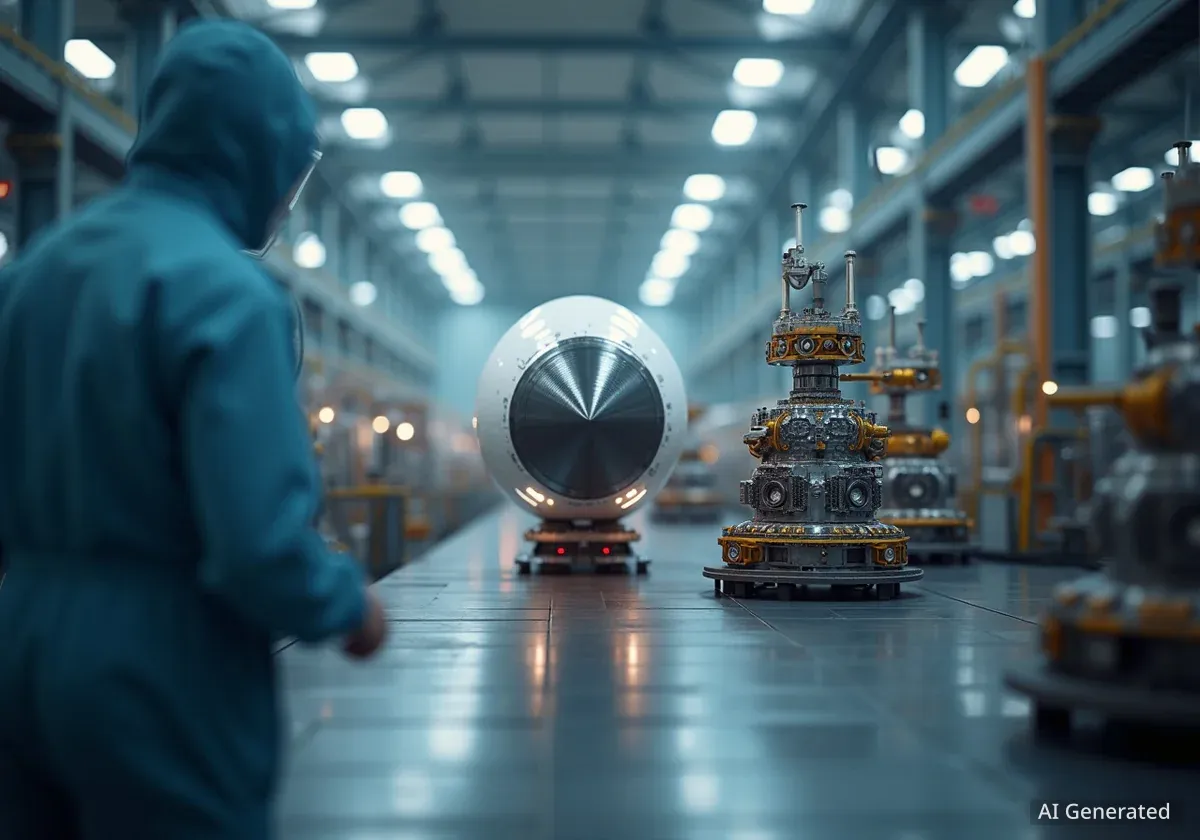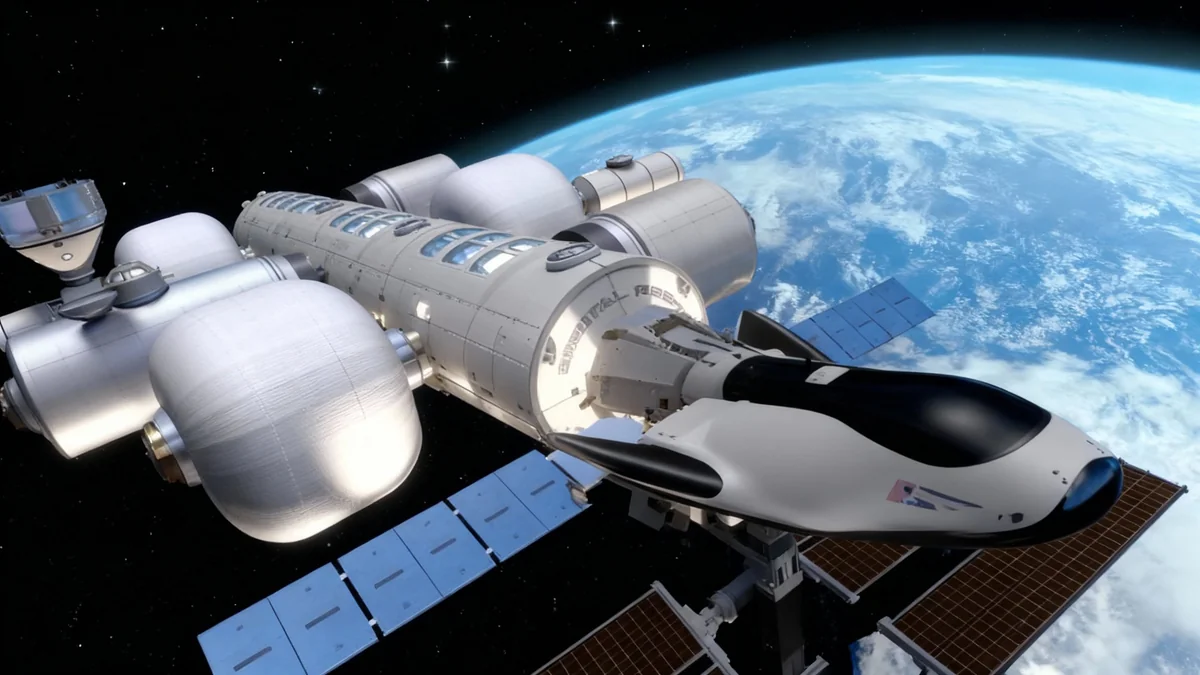Aerospace manufacturer and launch service provider Rocket Lab is drawing increased attention from industry analysts. The company has carved out a significant niche in the small satellite launch market and is now expanding its capabilities to become an end-to-end space company, a strategy that is reshaping its role in the global space economy.
Originally known for its Electron rocket, which specializes in dedicated rides for small satellites, Rocket Lab has diversified its portfolio through strategic acquisitions and in-house development. This expansion includes satellite manufacturing, spacecraft components, and flight software, positioning it as a comprehensive solutions provider for a growing list of commercial and government clients.
Key Takeaways
- Rocket Lab is gaining notice for its transition from a specialized launch provider to an integrated space company.
- The company's core launch vehicle, the Electron rocket, continues to be a leader in the small satellite market.
- Strategic growth includes the development of the Photon satellite bus and the upcoming larger Neutron rocket.
- Acquisitions of companies like SolAero, Planetary Systems Corporation, and Sinclair Interplanetary have vertically integrated its supply chain.
The Foundation of Success: The Electron Rocket
Rocket Lab's initial success was built on its Electron launch vehicle. Designed specifically for the small satellite market, Electron offered a solution for companies that previously had to piggyback on larger, more expensive rocket launches, often facing long delays and orbital compromises.
The rocket itself is an innovation. It is the first orbital-class rocket to use 3D-printed Rutherford engines for all stages, and its primary structure is made of a lightweight carbon composite material. This design philosophy focuses on efficiency and rapid manufacturing, allowing for a higher launch frequency.
A key aspect of the company's recent operations is the pursuit of reusability for the Electron's first stage. Unlike competitors who use propulsive landing, Rocket Lab has developed a unique method involving a mid-air capture. After re-entering the atmosphere under a parachute, the booster is snagged by a helicopter, a technique the company has successfully demonstrated in tests.
Electron at a Glance
- Height: 18 meters (59 feet)
- Payload to Low Earth Orbit: Up to 300 kg (660 lbs)
- Engines: 9 Rutherford sea-level engines (first stage), 1 Rutherford vacuum engine (second stage)
- First Successful Launch: January 2018
Expanding Beyond the Launchpad
While Electron established its reputation, Rocket Lab's long-term strategy extends far beyond launch services. The company is actively transforming into a comprehensive space corporation that can design, build, launch, and operate spacecraft for its customers.
The Photon Satellite Platform
A central piece of this strategy is the Photon satellite bus. This is a versatile spacecraft platform that can be configured for a wide range of missions, from low Earth orbit to interplanetary journeys. By offering Photon, Rocket Lab provides a one-stop shop for customers who need a satellite but lack the infrastructure to build one themselves.
Photon has already demonstrated its capabilities with missions for NASA, including the CAPSTONE mission to the Moon, which tested the unique orbit planned for the Lunar Gateway space station. This successful deep-space mission proved that Rocket Lab's technology could perform well beyond standard Earth orbit.
Strategic Acquisitions for Vertical Integration
To support its growing ambitions, Rocket Lab has made several key acquisitions to bring critical technologies in-house. This vertical integration strategy reduces reliance on external suppliers and gives the company greater control over its production timelines and costs.
Notable acquisitions include:
- SolAero Technologies: A leading producer of high-efficiency solar cells and panels for satellites.
- Planetary Systems Corporation: A manufacturer of satellite separation systems and deployment hardware.
- Sinclair Interplanetary: A provider of high-performance reaction wheels and star trackers, essential components for satellite attitude control.
These purchases mean that Rocket Lab can now build a significant portion of a satellite using its own components, streamlining the manufacturing process for its Photon platform and offering these components to other satellite makers.
Looking to the Future: The Neutron Rocket
Rocket Lab is not content with dominating the small launch market. The company is developing a much larger, fully reusable launch vehicle called Neutron. This rocket is designed to deploy satellite mega-constellations, conduct interplanetary missions, and eventually carry human crews into space.
A New Class of Rocket
The Neutron rocket is being designed with reusability as a core principle from the start. Its unique shape and materials are intended to withstand the stresses of re-entry without extensive refurbishment. The entire first stage, including its fairings, is designed to land back on the launch pad, making it a true single-piece reusable system. This approach aims to dramatically lower the cost of accessing space for larger payloads.
Neutron will be capable of lifting approximately 13,000 kilograms to low Earth orbit, placing it in direct competition with other medium-lift rockets. Development is underway at the company's production facilities and its new launch site at Wallops Island, Virginia.
"Reliable and frequent access to space is the enabler of our modern world," a company representative previously stated, highlighting the mission to make space more accessible for innovation and exploration.
The development of Neutron signifies Rocket Lab's ambition to become a major player across all segments of the launch industry, from small, dedicated missions to large-scale deployments.
A Comprehensive Space Ecosystem
Rocket Lab's evolution from a niche launch provider to an integrated space company is a significant development in the commercial space sector. By combining its reliable Electron rocket, the versatile Photon satellite bus, a growing portfolio of spacecraft components, and the ambitious Neutron rocket, the company is building a comprehensive ecosystem.
This strategy allows it to serve a diverse customer base, including commercial constellation operators, government agencies like NASA and the U.S. Space Force, and scientific researchers. The ability to offer services that span the entire lifecycle of a space mission—from satellite design to launch and on-orbit operations—provides a strong competitive advantage.
As the space economy continues to grow, companies that can provide integrated, reliable, and cost-effective solutions are well-positioned for success. Rocket Lab's deliberate and strategic expansion indicates its intent to be one of the leading forces in this new era of space exploration and commercialization.





